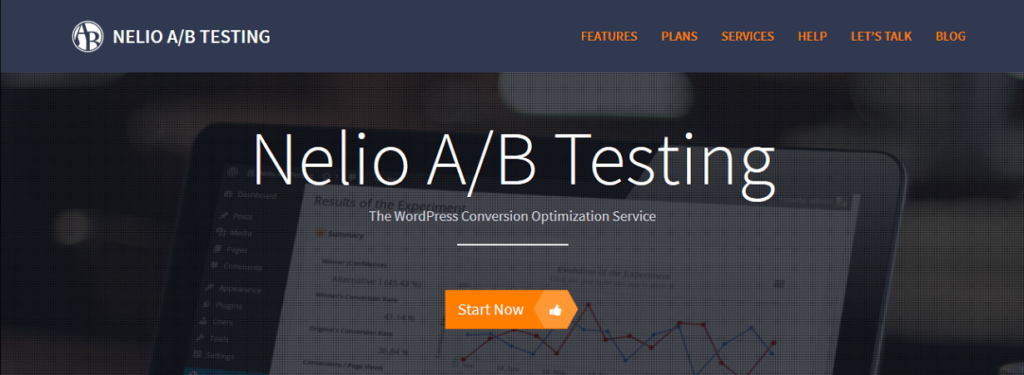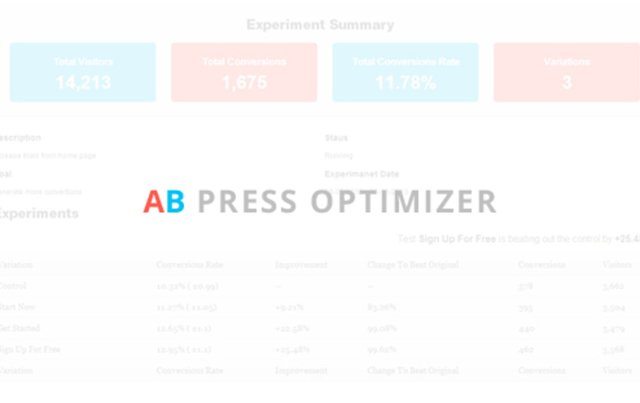It’s probably safe to say that everyone who runs a website wants it to convert better. Whether that means more email sign-ups, sales, donations, memberships, leads, downloads, or whatever it is you are trying to achieve with your presence on the web.
But let’s be honest, do you really know what makes your visitors tick? Do you have any idea why some customers buy your product and others don’t? Why some decide to stay on your site and others are leaving right away?
A website’s success—the customer’s decisions to buy or not, to stay or leave—depend on a variety of factors: design, copy, overall message, call to action, headlines, and images. All of these elements influence the outcome.
However, it can be difficult to determine which of them are effective and which are not. Knowing what works is better than guessing or waiting for someone to volunteer an opinion. And knowing requires quantifiable data.
But how is it possible to do away with the guess work and know for a fact what your visitors respond to? How do you go from conjecture to informed decision? This is what A/B testing is for.
What is A/B testing?
A/B testing simply means pitting two variations of your site against one another. In other words, it’s when you compare your original site (variant A) to a version to which you made changes based on assumptions about what you think would work better (variant B).
Then, you can test the modifications against the current design by serving up both versions to visitors and find out which one is the winner. If the experiment is successful you can make the modification permanent. If it isn’t, you try something else.
Testing allows you to validate any new design or change to your page before committing to it. It enables data-backed decisions and a shift from “I think” to “I know.” By measuring their impact on your metrics you can ensure that every change produces positive outcomes.
Anything can be tested: whole landing pages, headlines, descriptions, calls to action, images, videos, colors, site layout, visitor flow, and more.
Constant testing and optimization of your website has the potential to increase conversions while at the same time providing valuable insight about your visitors. That’s why in the following we will go over the best tools for A/B split testing available for WordPress. Let the experimentation begin.
Google Content Experiments
Price: Free
Up until 2012 this service was available under the name of “Google Website Optimizer,” but now it’s been rolled into Google Analytics. The good news is that most people will already have Analytics installed on their site, and can thereby go ahead and start testing quickly.
Because of that, the easy setup and the fact that it is free, Google Content Experiments is probably the best solution for anyone just starting out with split testing.
The service uses a slightly different approach from A/B or multivariate testing by using an A/B/n model. Instead of testing two versions of a page (A/B), or various combinations of components on a single page (multivariate), you can use up to 10 full versions of a single page, each with a separate URL.
The service allows the definition of goals and lets you follow up if they are reached. You can choose different metrics to track—from revenue and transactions to bounces, pageviews, and session duration. It is also possible to define custom goals.
To run an experiment you will need to insert a piece of code into your site’s header. If that is beyond your abilities or you don’t want to integrate the code into your theme, you can use this plugin to do it for you.
Optimizely
Price: $17-$359/month (price for platinum version on inquiry)
Optimizely is a real heavy hitter on the testing market with big names such as Disney, Starbucks, and MTV among their users. However, it is not only suitable for big projects with tens of thousands of visitors but also offers plans for smaller fish.
The service is very non-technical and is therefore appropriate for non-developers as well. The only coding that needs to be done is the implementation of optimizely’s testing code into your site, and there’s even a plugin for that (though it hasn’t been upgraded in a while).
Setting up experiments can be conveniently done with the help of a visual WYSIWYG (what you see is what you get) point-and-click editor. It allows you to implement variations on your existing site without the need to create full versions of the same page.
All plans of Optimizely offer unlimited experiments, automatic goal tracking, reporting, an optional HTML/Javascript editor, and the ability to run tests on multiple pages. More expensive plans also come with cross-browser testing, multivariate testing, visitor segmentation, geotargeting and other advanced features.
Nelio A/B testing
Price: $19-$59 (enterprise version on inquiry)
Nelio A/B is the first solution on the list that is specifically dedicated to working with WordPress. Since it is a plugin, all functions can be accessed directly from within the dashboard, without the need to use an external service or add any code.
The plugin offers A/B and multivariate testing. Post and page variations can be linked together in order to create split tests. Nelio allows setting multiple goals which is helpful if you are offering more than one product. For tracking it relies on Google Analytics, the results are displayed within WordPress. Once a winner is declared, the plugin lets you set it as the new standard with one click.
Besides the aforementioned types of content, Nelio also allows you to compare different themes, CSS variations, and post or page titles. On top of that, it also provides heatmaps and clickmaps that show which elements of your website catch the most attention from visitors.
AB Press Optimizer
Price: $39-$199/year
AB Press Optimizer is a premium plugin that integrates seamlessly into the WordPress dashboard, no coding required. It can be used to test theme elements, posts, pages, or custom post types.
Split tests are set up with the help of shortcodes which are inserted right into the content. The plugin allows you to change text, images, and HTML elements. It offers integrated statistics to easily determine the winner of an experiment.
While its abilities might not be as comprehensive as those of some of its competitors, it offers an easy and relatively affordable way for those who merely want to test specific elements within their site’s content.
Simple Page Tester
Price: Free ($59 for premium version)
Simple Page Tester is another plugin designed for WordPress and offers A/B testing for posts and pages. The setup is simple and straightforward, which is also due to the comparatively basic functionality.
Because it integrates directly with the content management system, split tests can be set up straight from the WordPress editor. Variations of your content are created and linked to the original with just a few clicks.
The free version claims to be SEO friendly and compatible with cache plugins. It also hooks in with Google Analytics for tracking. The premium version additionally offers split tests for custom post types, provides shortcodes for testing single elements and comes with additional tools for tracking conversions and analyzing the results.
Other solutions
- Convert Experiments by Yoast – A/B and MVT testing functionality for your website or blog
- Theme Testing Plugin by WPMUDEV – Premium plugin to test different themes, works with Google Analytics
- WP Experiments – Test page and post titles with this plugin
- WordPress Landing Pages – WordPress plugin specifically designed to split test landing pages
What do you use for split testing? Share your thoughts in the comments below!
 Nick Schäferhoff is an entrepreneur and writer/blogger from Germany. He learned WordPress when he needed a website for his first business venture and instantly fell in love. He is passionate about health, productivity, and continuous learning, which he writes about on his lifestyle blog. When not building websites, he likes to travel the world, experience other cultures, and learn new languages.
Nick Schäferhoff is an entrepreneur and writer/blogger from Germany. He learned WordPress when he needed a website for his first business venture and instantly fell in love. He is passionate about health, productivity, and continuous learning, which he writes about on his lifestyle blog. When not building websites, he likes to travel the world, experience other cultures, and learn new languages.






24 Comments